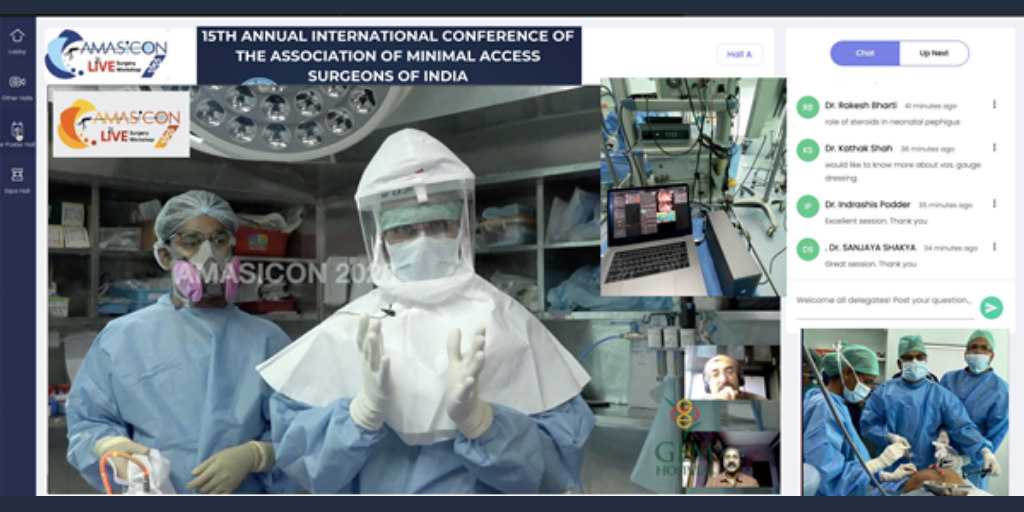AWS Public Sector Blog
Tag: Amazon S3
How Bucknell IT got 40 percent of their time back by moving ERP to the cloud
“Action cannot be completed because the system is out of date.” Every technology user understands the frustration of getting this message. When Bucknell University turned to the cloud to modernize their Enterprise Resource Planning (ERP) system, they found unexpected gifts along the way: more cost savings, better solutions, and best of all, new “found” time to devote to high impact projects.
Driving innovation in single-cell analysis on AWS
Computational biology is undergoing a revolution. However, the analysis of single cells is a hard problem to solve. Standard statistical techniques used in genomic analysis fail to capture the complexity present in single-cell datasets. Open Problems in Single-Cell Analysis is a community-driven effort using AWS to drive the development of novel methods that leverage the power of single-cell data.
Mediknit delivers high-def global surgery workshop with AWS Media Services
Mediknit is an online academy marketplace for healthcare professionals to access on-demand, need-based upskilling programs and professional development programs created by verified educators across the globe. In collaboration with GEM Institute of Laparoscopy and Robotic Surgery, Mediknit provides live surgery streams via the GEM Televersity portal for the continuing medical education (CME) needs of surgeons. With AWS, Mediknit scaled to meet the demand to provide this streaming solution across the globe.
UT Austin connects students with answers faster using Amazon Connect
The College of Liberal Arts at University of Texas at Austin wanted to make it simple for students, faculty, and staff to contact support agents. This is how they built and scaled a contact center solution on AWS with Amazon Connect that reduced call wait time, cut costs, and more easily resolved technical issues — all while call volume more than quadrupled.
Automated Earth observation using AWS Ground Station Amazon S3 data delivery
With AWS Ground Station, you can now deliver data directly into Amazon S3 buckets. This simplifies downlinking because you no longer need to run an Amazon EC2 receiver instance. It also saves you cost and simplifies the creation of automated processing pipelines like the one we are going to show in this blog. By using an automated Earth observation (EO) pipeline, you can reduce the operating burden of your staff, as after scheduling a contact, everything is handled automatically and you’ll get a notification when the processed data is available. Read on to learn how to create an automated EO pipeline that receives and processes data from the NOAA-20 (JPSS-1) satellite, using this new AWS Ground Station feature.
Using the cloud to get rental assistance quickly to those in need
Even before the pandemic, many people were rent burdened, with a quarter of renters paying more than half their income on rent. US Congress approved two bills containing $45 billion for emergency rental assistance programs (ERAP) that states and local governments can use to support people in need. Distributing these funds quickly and efficiently requires local agencies to rapidly design and deploy new engagement models, programs, and workflows that are easy to use, that can quickly scale up to meet demand, and are flexible enough to adjust to changes in federal and local requirements. Learn how these AWS customers and partners are leveraging the cloud to quickly launch and distribute benefit assistance programs like emergency rental assistance.
New Performance Dashboard on AWS makes delivering open, responsive government simple
Data is at the heart of showing citizens how public services are working, and it enables the public sector to improve policy and operational delivery. Citizens expect accessible and useful services. The public sector aims to demonstrate success through data. To build trust in this relationship and promote accountability, public sector organizations need to communicate the data-driven performance of the services they provide. To help address these challenges, AWS is releasing Performance Dashboard on AWS. Performance Dashboard on AWS is a new open source solution to help you measure and share what’s important in one place and at minimal cost, and you can have the solution up and running in a matter of minutes.
NUS Urban Analytics Lab scales research globally with AWS
The Urban Analytics Lab at the National University of Singapore (NUS) spearheads research in geospatial data analysis and 3D city modelling. The lab’s work underpins the development of smart cities and provides scientists, architects, urban planners, and real estate developers with data insights. These insights help parties make informed decisions about projects ranging from energy modelling to urban farming. To meet rising global demand for its data analytics and planning tools, Urban Analytics Lab turned to Amazon Web Services (AWS).
Using the cloud to better understand and address social determinants of health
According to FAIR Health and the American Medical Association, telehealth use saw a nearly 3000% growth from pre-pandemic to during the pandemic. These services make virtual, real-time interactions between patient and provider possible. However, the great promise of telehealth has highlighted existing roadblocks that some face when trying to access healthcare in this country. The National Health IT Collaborative for the Underserved (NHIT) is a 501(c)3 non-profit organization on a mission to provide equitable access to health technologies and to make sure that these technologies address the needs of underserved communities and communities of color. Since its founding in 2008, NHIT has worked to advance health equity and economic viability on issues such as broadband access, electronic health records, precision medicine, consumer health applications and disaster resiliency.
Accelerating genome assembly with AWS Graviton2
One of the biggest scientific achievements of the twenty-first century was the completion of the Human Genome Project and the publication of a draft human genome. The project took over 13 years to complete and remains one of the largest private-public international collaborations ever. Advances since in sequencing technologies, computational hardware, and novel algorithms reduced the time it takes to produce a human genome assembly to only a few days, at a fraction of the cost. This made using the human genome draft for precision and personalized medicine more achievable. In this blog, we demonstrate how to do a genome assembly in the cloud in a cost-efficient manner using ARM-based AWS Graviton2 instances.









